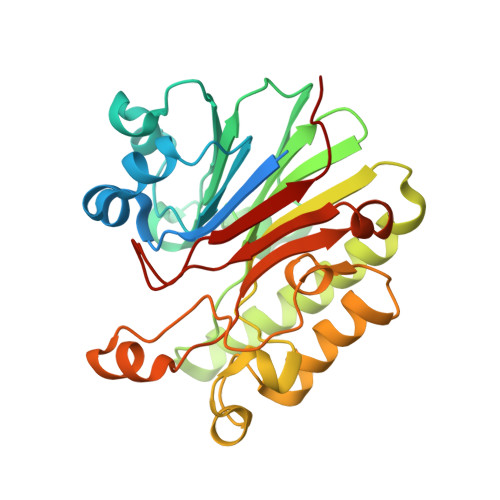Structure analysis of the global metabolic regulator Crc from Pseudomonas aeruginosa.
Wei, Y., Zhang, H., Gao, Z.Q., Xu, J.H., Liu, Q.S., Dong, Y.H.(2013) IUBMB Life 65: 50-57
- PubMed: 23281037
- DOI: https://doi.org/10.1002/iub.1103
- Primary Citation of Related Structures:
4F1R - PubMed Abstract:
The global metabolic regulator catabolite repression control (Crc) has recently been found to modulate the susceptibility to antibiotics and virulence in the opportunistic pathogen Pseudomonas aeruginosa and been suggested as a nonlethal target for novel antimicrobials. In P. aeruginosa, Crc couples with the CA motifs from the small RNA CrcZ to form a post-transcriptional regulator system and is removed from the 5'-end of the target mRNAs. In this study, we first reported the crystal structure of Crc from P. aeruginosa refined to 2.20 Å. The structure showed that it consists of two halves with similar overall topology and there are 11 β strands surrounded by 13 helices, forming a four-layered α/β-sandwich. The circular dichroism spectroscopy revealed that it is thermostable in solution and shares similar characteristics to that in crystal. Comprehensive structural analysis and comparison with the homologies of Crc showed high similarity with several known nucleases and consequently may be classified into a member exodeoxyribonuclease III. However, it shows distinct substrate specificity (RNA as the preferred substrate) compared to these DNA endonucleases. Structural comparisons also revealed potential RNA recognition and binding region mainly consisting of five flexible loops. Our structure study provided the basis for the future application of Crc as a target to develop new antibiotics.
Organizational Affiliation:
School of Life Sciences, University of Science and Technology of China, Hefei, People's Republic of China.














